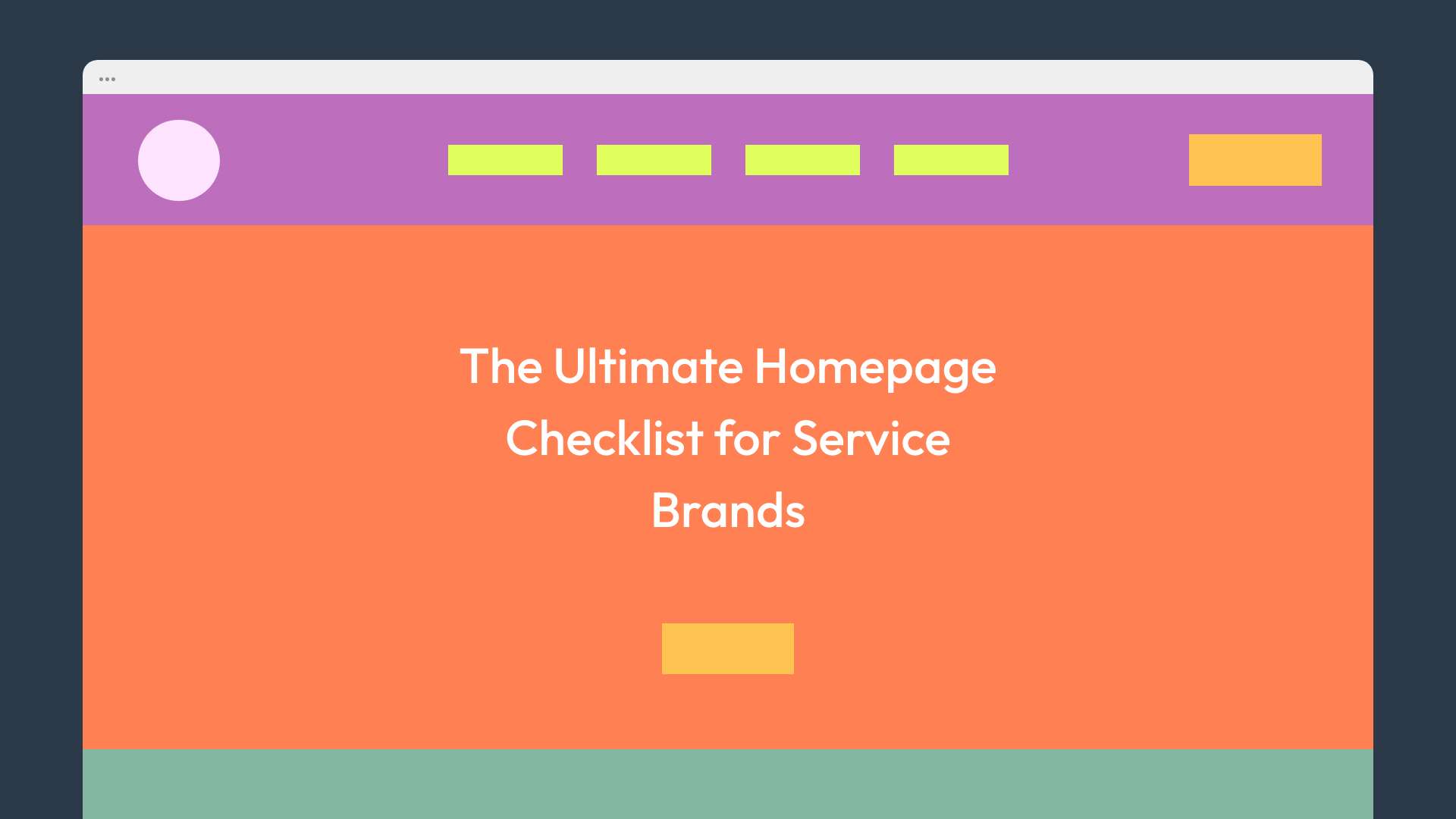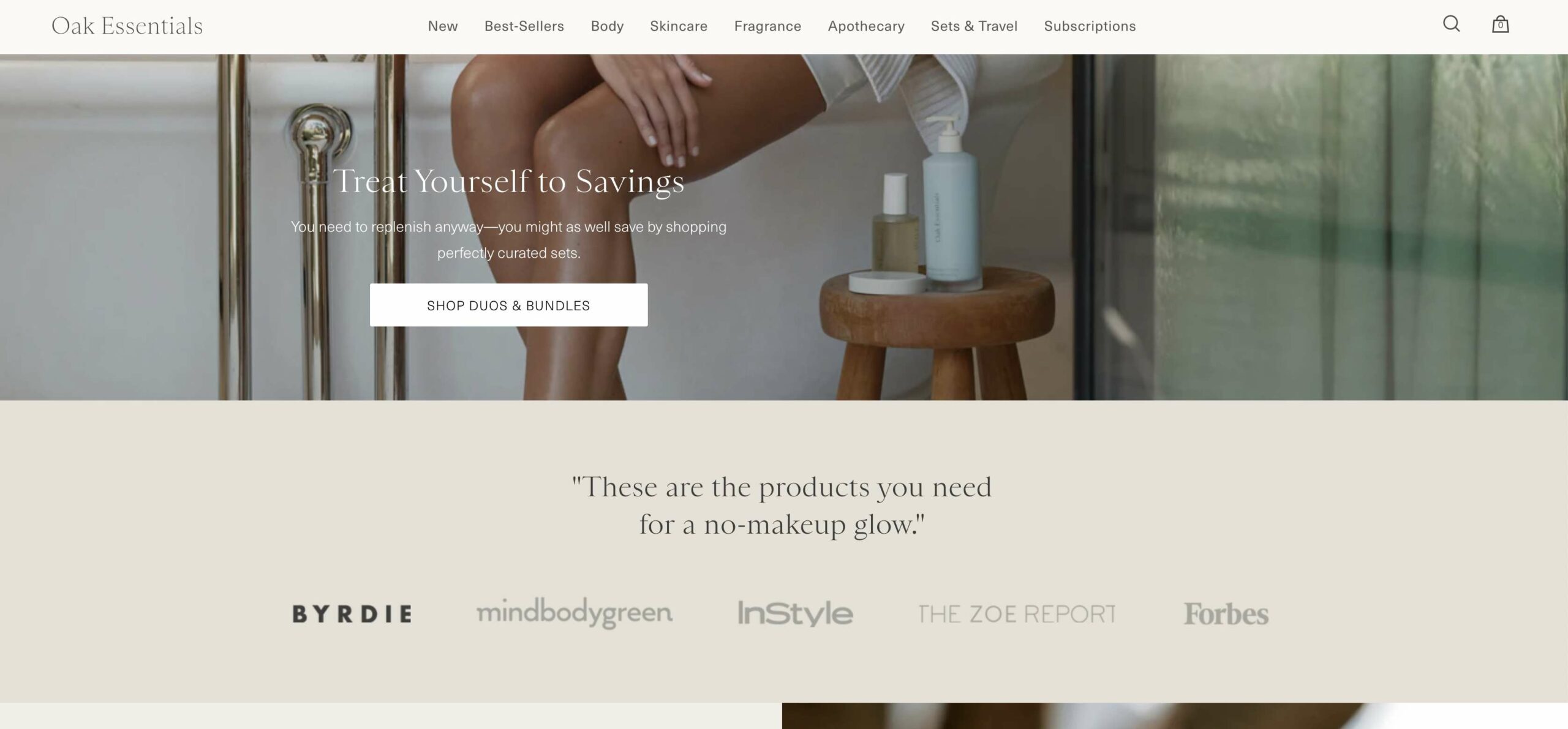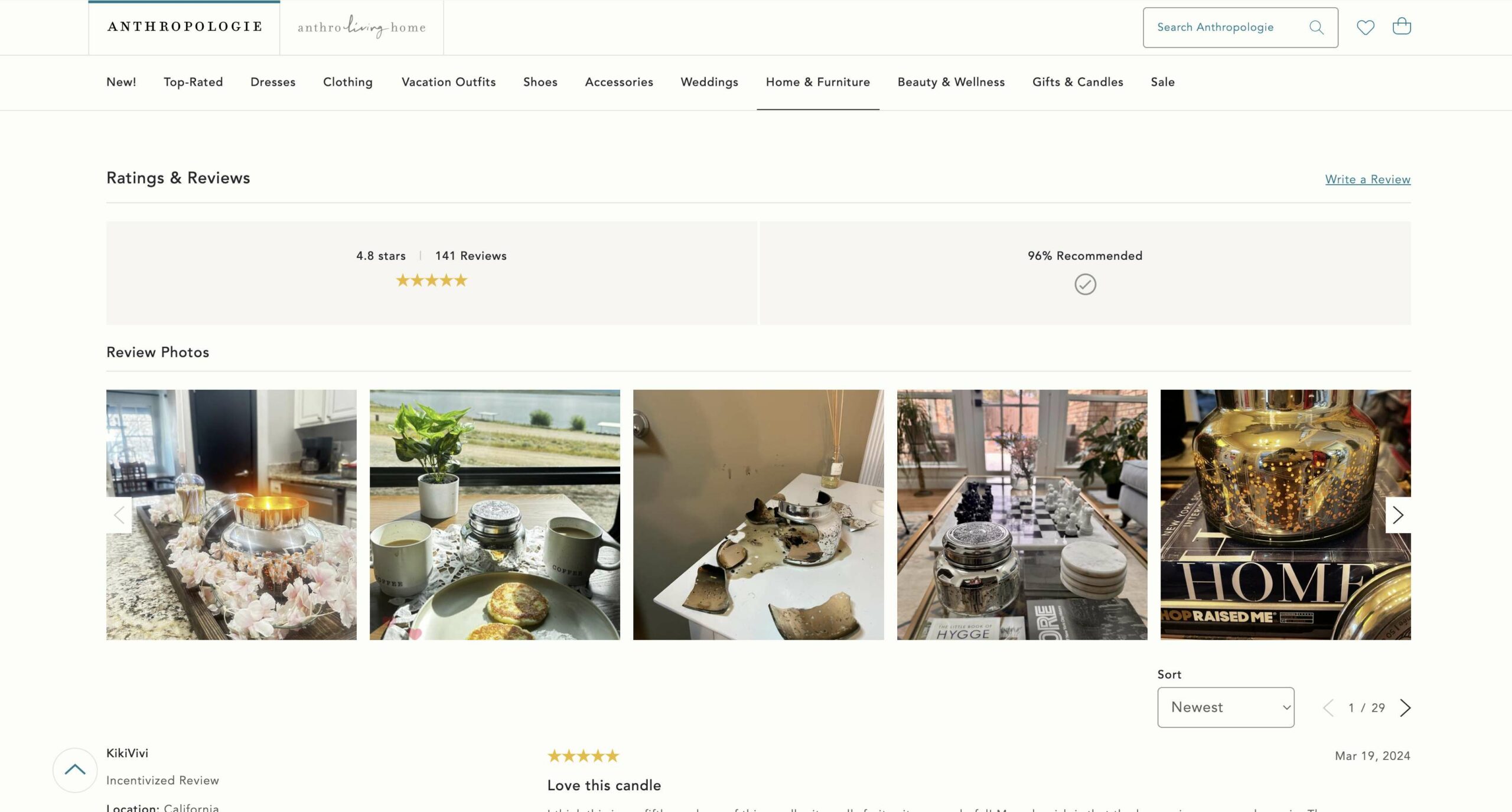If you’re feeling overwhelmed about what exactly should grace the homepage of your website and what can be saved for deeper exploration, you’re not alone. The front page of your site is important to get right and spend time on.
Your homepage is the modern-day storefront, a space where first impressions are formed and decisions are made. Yet, knowing what elements deserve this prime real estate can feel confusing and overwhelming.
While there isn’t a perfect length (pro-tip: people don’t mind scrolling anymore), getting to the heart of what you do quickly is imperative. With endless homepage advice and examples out there, it’s easy to get lost in the noise, wondering if you’re making the right choices for your business. We thought this homepage checklist we use could help you on your journey.
What’s on the agenda
Today, we are breaking down…
- Essential elements your homepage needs
- Driving the user where they want to go with clear navigation and goals
- Attract visitors with language that appeals to them
- Pro-tips to ensure your business doesn’t blend in but stands out
Whether you’re crafting a homepage for the first time or reevaluating what you’ve got, this checklist is designed to craft you a standout, easy-to-understand homepage. Let’s dive into the must-haves for your homepage, breaking each down into actionable insights, so you can build not just any online presence, but one that mirrors the passion and dedication you pour into your business every day.
Website Hero Section
1. Headline: Think of your headline as the elevator pitch for your business. It should be clear, compelling, and concise, letting visitors know exactly what your business is all about within seconds. We like to use Donald Miller’s approach, called the Grunt Test.
What is a grunt test?
The hero section of your website needs to have a distinct statement that tells the reader what you do. Clarity over cuteness, here.
Example: What do you do? Not very clear. Target: Who is this for? How do I get the very best version of you?
Example: What they do. Clear. Legal services; Target: injured workers. How do I get it: Schedule a call.
2. Subheadline: This is where you get a bit more chatty. Elaborate on your headline with a subheadline that promises a solution to a problem or highlights the unique value your business offers. The clearer you communicate this the easier it will be for folks to keep scrolling.
3. Visuals: Whether you choose to use photography, video, color, or motion graphics, we recommend you have captivating imagery on your site. If you sell a product, this recommendation triples!
4. Call to action (CTA): What do you want them to do after reading the hero section? Some will come to your site ready to buy, some might want to browse so feel free to have one-to-two calls-to-action: one primary and one secondary. A few great calls to action are:
- Get In Touch
- Start Your Free Trial
- Get Your Free Guide
- Join Our Community
- Book Your Consultation
- Subscribe for Updates
- Watch the Demo
- Request a Demo
- Download Now
- Share Your Thoughts
- Login
- Start Your Project
Each CTA is designed to engage users at different stages of their journey, from initial interest to decision-making, enhancing their interaction with your brand or platform.
Core Content
The Meat and Bones
- What You Do: Spell it out. Use language that even your grandma would understand.
- Who You Serve: Identify your target audience. Make them feel seen.
- How You Help: Explain how your product or service solves problems or makes life better.
Examples of core content could be sections such as:
About Me/Us: This section could tell a short version of your story, encouraging the reader to click and read more to build a relationship and empathy. It helps humanize your business and connect emotionally with your audience.
- Call to action ideas: Get to know the team, Learn more about us, Our story
Products/Services: Clearly outline what you offer. Make sure you have…
- For products, include categories, features, benefits, and pricing.
- For services, describe the service process, outcomes, and advantages for the client.
Testimonials/Reviews: This is important, no one sells your brand better than customers who love you. More on this later.
FAQs: Address common questions upfront to save your visitors’ time and reduce barriers to engagement or purchase. This section helps clarify any doubts and showcases your customer service approach. Also, google loves it.
Blog/Resource Center: A dedicated area for articles, guides, case studies, and educational content positions your brand as an industry leader and resource.
This section can drive SEO, engage readers, and provide value beyond your products or services.
Final CTA: Every page should have a clear CTA guiding visitors toward the next step—whether it’s to make a purchase, sign up for a newsletter, request more information, or follow your social media channels. CTAs should be concise, compelling, and visibly stand out on the page.
Chunk this content into bite-sized pieces. Use bullets, short paragraphs, and plenty of white space to make it digestible. Remember, the internet loves to snack on information!
The Trust Builders
Social Proof and Testimonials
Humans are herd animals at heart. We’re reassured by others who’ve walked the path before us. Include customer testimonials, trust badges, and press mentions to build credibility. It’s like saying, “Don’t just take our word for it; look at these people who love us too!”
What are some examples of social proof:
1. Oak Essentials: They feature positive media mentions from reputable outlets like Byrdie, mindbodygreen, InStyle, The Zoe Report, and Forbes, showcasing the efficacy and desirability of their products.
2. Dribbble: Dribbble makes note of the amount of “shots” or content they have to share being over 18 million.
3. Anthropologie: They use customer reviews, influencer collaborations, and featured press mentions as forms of social proof to enhance trust and credibility with their audience.
4. Headwaters Painting: When we designed Headwaters Painting, it was clear that social proof is needed at every interaction with the customer. We designed a section on the site that specifically showcases their Google reviews and calls out their 5-star rating.
5. Left on Friday: LoF uses social proof with reviews from users on their site and allows for photo uploads to further showcase the fit of swim suits on their customers.
6. ClickUp: Based on 10,000 reviews on various social proof platforms immediately pays of the postive outcomes of using Clickup. With that, Clickup also showcases popular, well-known brands that use their tool.
Incorporating these elements into your website can significantly enhance trust and credibility, which are crucial for converting visitors into customers. Each of these examples offers a different approach to leveraging social proof, demonstrating the versatility and impact of this strategy across various industries and contexts.
Crucial Final Components
1. Quality Visuals
Use high-quality images or videos that reflect your brand and appeal to your target audience. Visuals should complement your content, not distract from it. It needs to guide the visitor down the page.
2. Mobile Responsiveness
In today’s scroll-and-go world, if your homepage isn’t mobile-friendly, you’re missing out. Ensure your site looks great and functions flawlessly on devices of all sizes. It’s like being a gracious host, ensuring all guests, regardless of how they arrive, feel welcome.
3. Contact Information
Make it easy for visitors to reach out. Display your contact information prominently and include a simple, friendly contact form. It’s like leaving the porch light on for your guests.
4. The SEO Boost
Search engine optimization is a very important component of building your homepage and website as a whole. As local SEO agency, Hook Agency states, “SEO in general, is one of the most powerful marketing systems and often can result in ROI of over 200%.”
Performing keyword research involves identifying terms and phrases your target audience uses when searching for your products or services. It’s also important to understand user intent… what they mean when they are searching.
Start by brainstorming topics relevant to your business. Use tools like Google Keyword Planner or Ubersuggest to find related keywords, assess search volume, and understand competition levels. Analyze the keywords your competitors rank for. Aim for a mix of broad and long-tail keywords to balance reach and specificity. Use your findings to optimize website content, blogs, and metadata. Regularly update your keyword list to reflect trends and search behavior changes, ensuring your content remains relevant and visible.
Homepage Must-Have Checklist
Start here: SEO Keyword Research
Tools needed:
- Google Analytics
- Google Search Console
- Keyword Tool
- Spreadsheet
Brainstorm 2-3 target keywords to use throughout your website copy and messaging. A sample could be a “real estate agent in hastings” – that is a keyword and then you’d want that to be in your website title, description, url, copy on the page, titles, etc. But what’s more they need to make sense, otherwise google calls that keyword stuffing and marks you down as a cheater 😉
Website Hero
- Headline
- Subheadline
- Call to action
- Does it pass the GRUNT TEST? Ask your beta testers.
Core Homepage Content
- About section
- Services/Product Section
- Process
- Testimonials
- Social Proof – awards, customer logos, press
- FAQ
- Blog
- Call to action
Footer
Don’t forget!
- Social channel links
- Location (helps with SEO)
Remember, your homepage is the heartbeat of your online presence. With this checklist, you’re well on your way to creating a homepage that not only looks great but also performs brilliantly. So, roll up your sleeves, and let’s make your homepage a welcoming, conversion-driving powerhouse!









